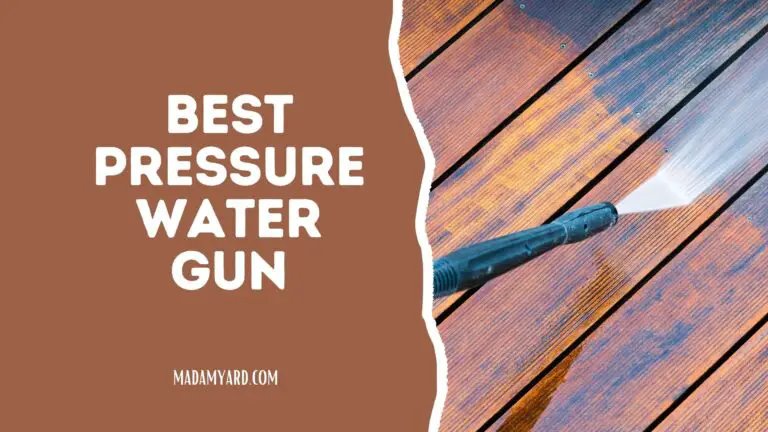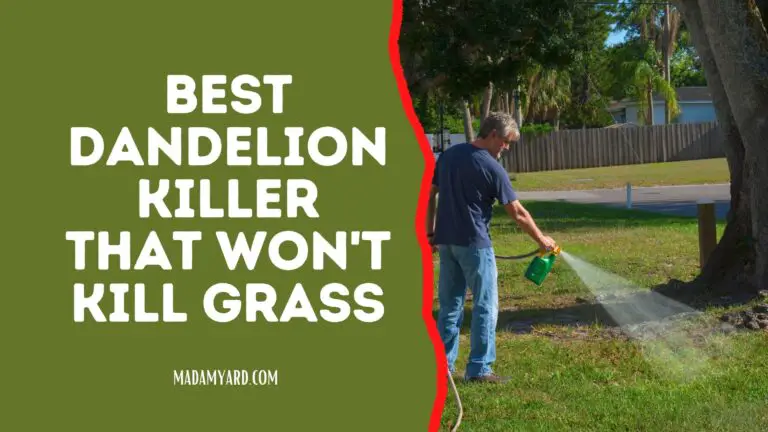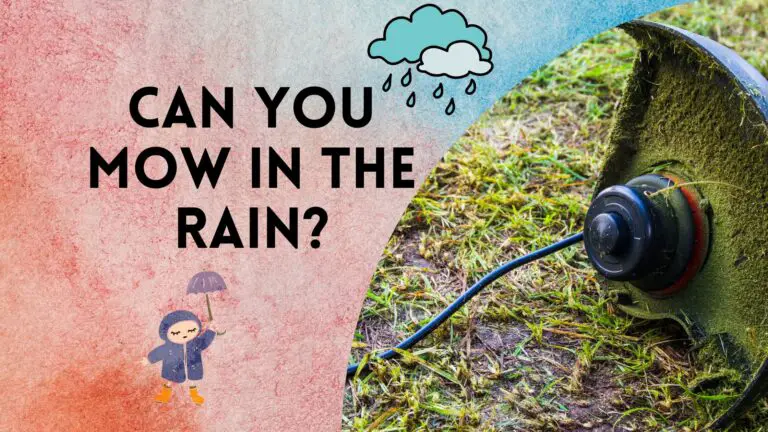Why Your Ground Cracking? (How To Stop It?)
A lawn can enhance the aesthetic of any space by offering greenery and a place to play and engage in recreational activities. On the other hand, cracks on the ground may be ugly and negatively impact its appearance. You may be wondering why your ground cracking.
Lawn cracks are due to lack of moisture and the kind of soil. Drought conditions can cause the moisture content of soils with the best clay ratio to sink dangerously low. As wetness removes from the soil, it contracts, and this contraction pulls the earth apart, causing surface fractures as it shrinks.
Preserving the moisture content of the soil is essential for maintaining a nice lawn. Not only would this avoid cracks, but it would also promote healthy lawn growth.
In this post, we shall go over the reasons for grass cracks and the solutions you can take to solve the problem.
Why Your Ground Cracking?
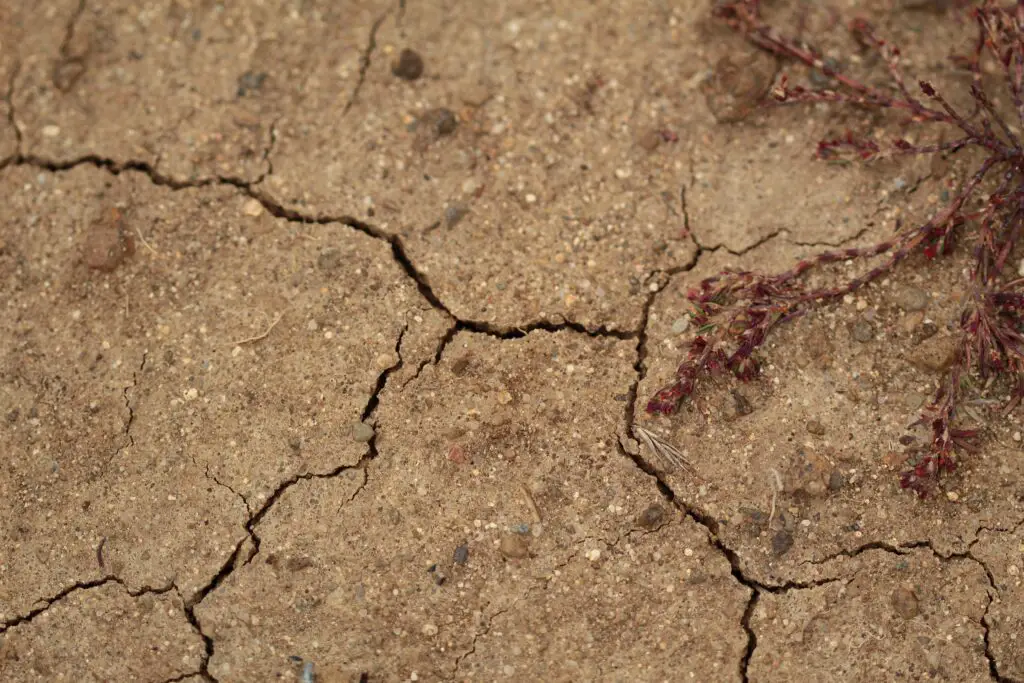
Because your garden soil is drying out and shrinking, it is cracking, and it is almost certainly due to a mix of circumstances.
The consistency and structure of the soil are two factors that influence soil cracking. Because clay soil stores more water than other soils, it is the most likely to crack.
Because clay soil particles are small and thin, they pack closer together. It will be compacted even more if you walk on it or park large cars on it, exacerbating the cracking problem.
The amount of moisture in the soil is another factor that influences soil cracking. Extremes in either direction will increase soil cracking.
Soil compacts when it receives too much water after a downpour or through irrigation. It’s relevant if you walk on the soil, park heavy cars, or dig or rototill the soil when it’s moist.
Water evaporates more quickly in hot, dry weather, dries up the soil, and plant roots absorb water to survive the drought.
What Are The Signs Of Unhealthy Soil?
The soil is one of the most crucial components in creating a healthy garden. Look for these 4 Signs Your Garden Soil Is Unhealthy when developing a garden.
The magical substance keeps your plants in place while also providing them with the necessary nutrients to thrive. Your plants will be able to establish a healthy root system and reach their full potential if you use good soil.
How can you know if your garden soil is healthy or not? Step outdoors and examine it more closely. You will notice these indicators if your soil is harmful to plants:
1. Full Of Sand
Most plants do not thrive in sandy soil. If all you find when you dig into your garden plot is a shovelful of light-colored, lightweight sand or silt, the soil is unlikely to be nutrient-rich enough to sustain plant growth.
2. Full Of Clay
If your soil is brilliant red, ochre, or black, you may have a clay cracking. Water the soil and then compress a ball of it in your hand to be sure.
You have heavy, clay soil if it stays together in a lump that feels slightly sticky. If you use too much clay, your plant roots will struggle to spread and absorb the oxygen they require.
3. Has A pH Problem
An affordable soil testing kit should be available for purchase from a decent local nursery, and it’s a worthwhile investment of a couple of dollars to obtain a more scientific look at the condition of your garden soil.
The test will determine if your soil is acidic or alkaline. Plants cannot access the nutrients they require for optimal health if the pH is too far in either direction, even if those nutrients are plentiful in your soil.
4. Too Quiet
There could be an issue if your soil has no insect activity or indicators of plant life. Worms, beetles, and other insects thrive on healthy soil. Worms are the most essential, as they assist in conditioning the soil and offer nutrient-rich worm castings to your plants.
It’s a solid sign that the soil isn’t strong enough to support a garden if there isn’t a single blade of grass or weed growing in a piece of dirt.
Is It Dangerous If Soil Cracks?
You may tempt to disregard the cracks in the lawn if you are unconcerned with the aesthetic of your yard. On the other hand, cracks in your lawn are dangerous for various reasons.
Kill Plants & Grass
Grass and landscaping cost a lot of money, even if you don’t think about it. Cracks in your lawn are a symptom of a far broader grass issue: a lack of water. Cracks in your lawn can also continue to grow and damage other plants and portions of your lawn if they are left untreated.
Widespread Erosion
The grade of your yard is crucial for preserving your home’s foundation if you reside in a rainy area. Cracks in your grass can lead to extensive erosion, becoming a much worse problem.
Animals And Humans Can Injure
Finally, even the tiniest cracks might cause bodily injury to you, your pets, or your family members if they are hidden from view.
Cracks and other grass hazards might be dangerous if someone is out walking in the yard late at night. To avoid injury or harm to your family and friends, it is critical to repair the cracks in the yard.
Preventing Future Cracks In Your Lawn
Establish A Lawn Care Routine
Implementing a good lawn care regimen is the best approach to prevent cracks in your grass. It involves applying a good lawn fertilizer each year, aerating as needed, and keeping track of your grass watering schedule.
Add Further Soil Types To Clay Soil
Residents in southern states are well aware of the several drawbacks of clay soil. While it offers many advantages, it can make lawn maintenance and upkeep more challenging.
If your lawn suffers from drought cracks year after year, it may be time to take a more active approach. Adding 1-2 inches of sandy loam soil to the top of your grass will help to prevent cracking during dry periods.
It is complex to work sand loam into clay soil. It’s best to apply the sandy loam soil to the top of your lawn before aerating, which will aid in the assimilation process. This procedure may help in avoiding clay soil cracking.
Buy A Sprinkler System
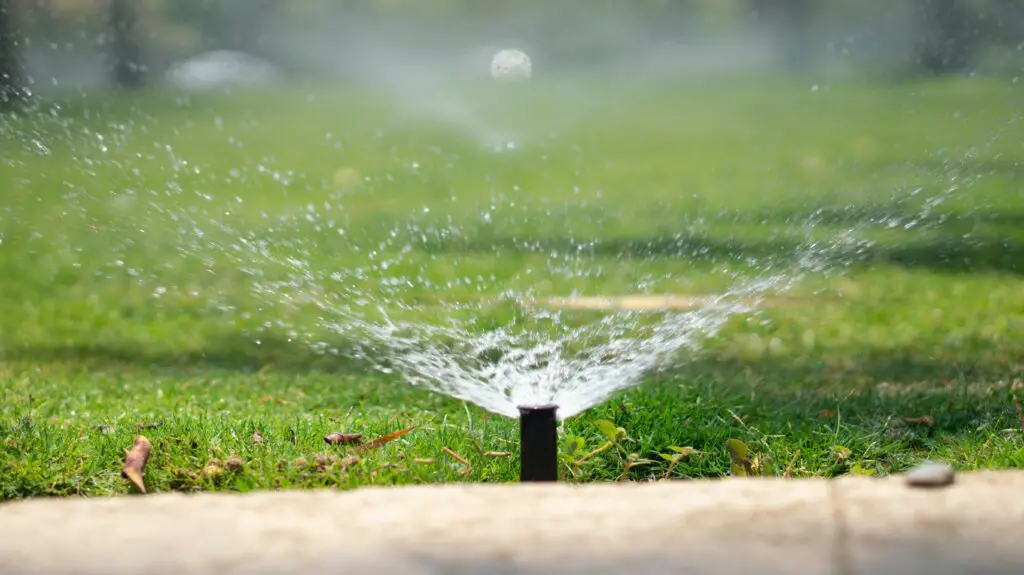
It takes a lot of devotion to layout your hose, place your sprinklers, and remember to turn them on. If you reside in a dry area, you should think about installing an irrigation system.
While this is not a cheap expenditure, it may go a long way toward avoiding your grass from cracking due to dryness.
Check For Signs Of Drought Or Stress
Your grass is generally the first to show indications of drought or stress. During the hot, dry months, keep a close eye on your lawn to help it recover from drought before it’s too late.
Stop Cutting Your Grass Too Short
Finally, don’t mow your lawn too short. Excess dirt is exposed when you cut your lawn too short, and it can result in dryness or premature cracking.
Always mow your lawn on the highest setting on your mower. While you will have to mow your grass more frequently, you will eliminate the risk of harm to your lawn.
You can easily heal the cracks in your lawn once and for all with these simple solutions.
How Do I Stop My Ground From Cracking?
The following are the methods I used to enhance my lifeless soil successfully.
Create Permanent Garden Beds And Pathways
Walking in garden beds is a regulation I acquired early on in my gardening education. Stepping on garden soil compacts it, destroying tilth and the habitat of beneficial soil creatures.
Establish permanent beds and walkways to delineate the beds properly. To keep foot traffic out, keep them narrow enough that you can reach all locations without stepping inside.
Instead of starting each season in a compacted state from the previous year’s paths, beds established in this manner can improve each year.
Instead of applying pricey modifications over a large area, you can apply them solely to permanent bed sections, avoiding the paths. Because the beds are permanent installations, irrigation installation is also simplified. Endless trails of white clover, micro clover, or wood chips attract and fertilize beneficial insects.
Aerate Your Lawn
You must water your cracked lawn to repair it, and you should aerate it first to loosen it up.
When the soil dries out, it shrinks and becomes compacted. Aeration loosens compacted soil by striking it with hundreds or thousands of small, shallow holes.
Aerating your lawn can be done in several ways, one of which is to walk over it while wearing aerating shoes. Small “teeth” on the bottom of aerating shoes score the ground as you walk.
It is recommended that you utilize a standard walk-behind aerator for larger areas. A rolling mechanism in walk-behind aerators scores the soil as you push it.
Test The pH
Of course, you should make it a practice to test the pH of your soil regularly, and it determines whether it is acidic or alkaline.
A disposable testing trip or an electronic tester, both of which are available at most home improvement and gardening stores, can be used to determine the pH level of your soil.
Most plant species thrive best when the pH level is between 5.5 and 7. If you go above or under this amount, your grass and plants’ growth capacity will be hampered.
Consistent Watering
To preserve moisture in the soil for lawns, you should have a regular and normal watering schedule that provides the necessary amount of water to protect the soil from cracking.
Applying water twice or three times a week using a sprinkler system preprogrammed to come on for 15 minutes. Depending on how many sprinklers you use during the process, this watering plan should supply 2 to 3 inches of water to your lawn.
Chopped Leaves (Or Leaf Mold)
Don’t throw away all those fallen leaves! Leaves are mineral-rich, and when added to the garden, they provide food for earthworms and other bacteria.
They can also help to retain moisture in lighter sandy soils and lightening heavy clay soils. They are a fantastic source of carbon and will quickly improve the nutrients in the soil.
It’s ideal if the leaves are chopped before putting them in the garden. The simplest method is to rake them up after mowing them a few times using a mower.
Place them on top of your garden beds to degrade over the winter and early spring, then till them in or use them with a no garden’s foundation.
If you have a lot of leaves, you can make leaf mold by bagging your chopped leaves for a year or at least one season. Alternatively, you may rake your leaves into a large pile and wait- but it doesn’t work too well here in the valley, as winter winds blow the leaves all over the place!
Leaf mold has the power to increase the quality of your soil and is comparable to peat moss in terms of moisture retention.
Add Plenty Of Perennials
While growing your own frequently involves a lot of annual plants, you should also consider adding a lot of perennials when trying to enhance the soil in your garden. Perennial plants are beneficial to soil health.
They’ll stay put throughout the seasons and come back year after year. Their roots help to support soil and keep it healthy and aerated.
Increasing the amount of carbon sequestration in your garden by adding more perennial plants is also beneficial. On the other hand, Perennial plants aid the system by continuing to feed it over time. In your garden, perennial plants help to develop soil.
They can build organic soil where they are planted. They can also be used as mulch to supply sources of vegetative material to nourish other portions of your garden over time.
Perennial vegetables and fruits, perennial flowers, and perennial herbs are just a few of the perennials you can cultivate in your garden.
Add Mulch On Top Of Soil
Mulch on top of the soil has many advantages. It helps to insulate the soil, keeping plants sown before a late April frost from being injured by the cold.
Mulch will gradually decompose, giving your soil nutrients and organic matter. However, water retention for dry soil lawn is the main benefit of mulch that we are interested in.
The soil beneath will retain water considerably better with a layer of mulch on top. In a drought, this means that the water in the soil will not evaporate quickly.
Mulch options include wood chips, grass clippings, fallen leaves, sawdust, and compost.
Plant Cover Crops
Cover crops are a great way to supplement your soil development efforts. They can add organic matter and nutrients to the soil, increase drainage and aeration, and attract helpful soil organisms while also acting as seedlings mulch.
While cover crops can be planted at any time during the year in rotation with other crops, they are most commonly sown in the late summer or early fall to flourish during the winter.
The cold winter damages many to make spring planting simpler, while others are hauled under before planting. Turn cover crops under with a digging fork (or hens!) three weeks before planting in the spring.
Here are a few cover crops that have proven to be successful for me:
- Buckwheat
- Cowpeas
- Daikon radish is one of the ingredients in this dish
Conclusion
You now understand why your ground is cracking and how to fix it. In addition, you know what procedures to take to minimize or mitigate the situation every year.
I hope you found this article informative; if so, please forward it to someone who might benefit from it. Best of luck in getting your soil back to its pre-crack state!


